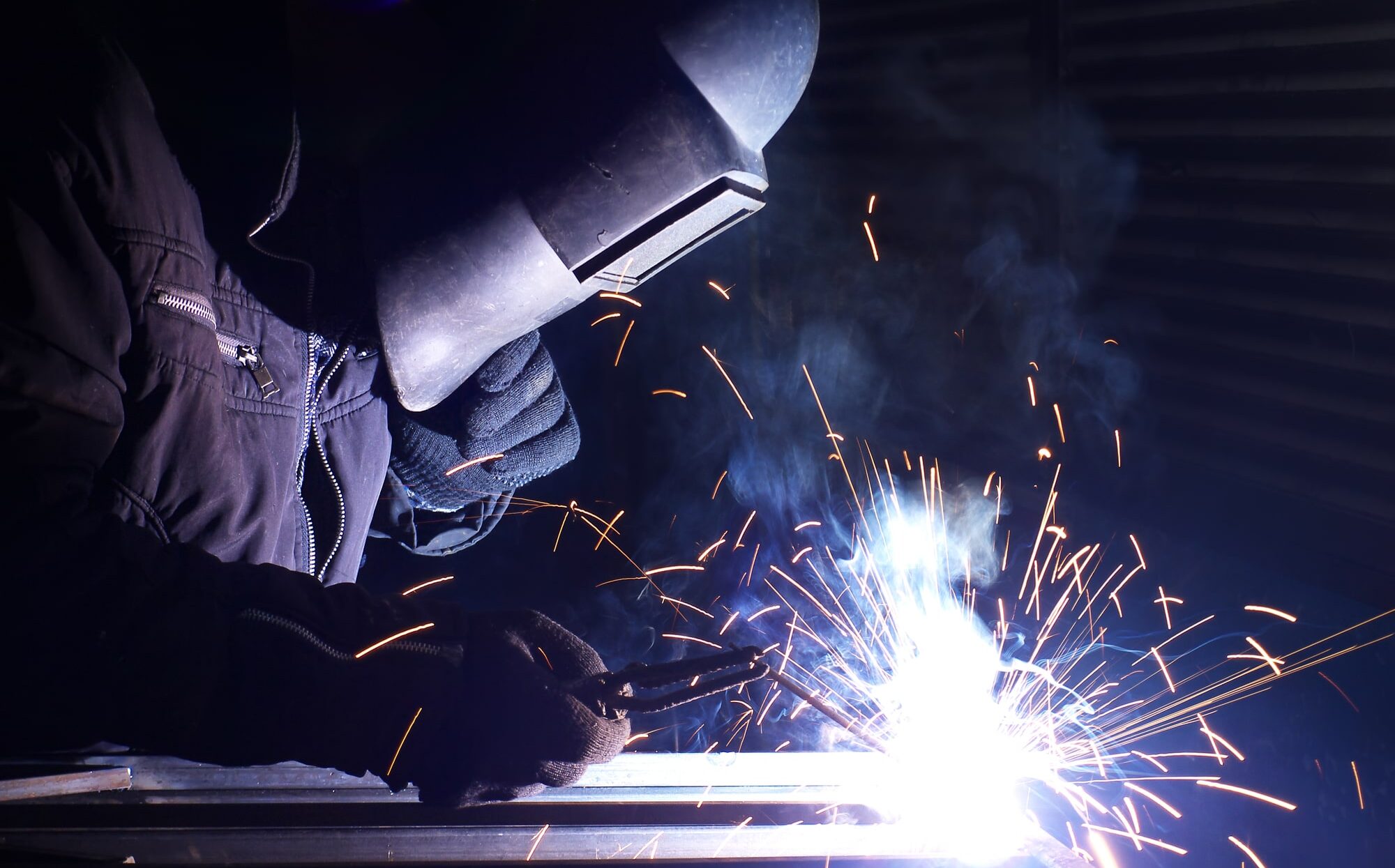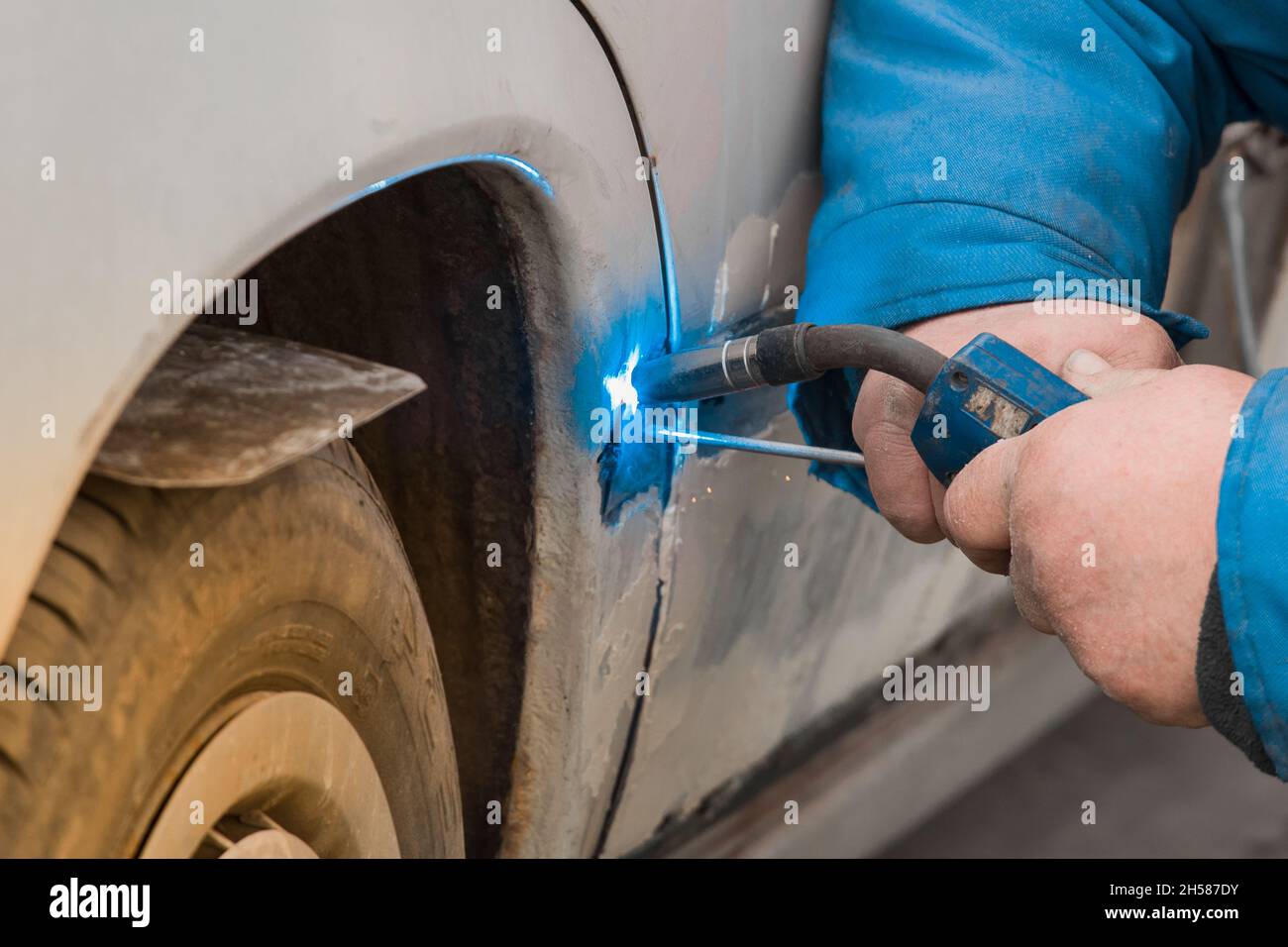Typical Welding Repair Service Issues and Just How to Address Them Effectively
Welding repair services typically experience a range of concerns that can threaten the stability of the end product. Typical troubles include inadequate penetration, porosity, and misalignment, to name a few. Each flaw offers distinct challenges that require particular approaches for resolution. Recognizing these problems is important for welders aiming to boost their outcomes and skills. This conversation will explore these typical welding repair work concerns and effective methods to resolve them.
Poor Infiltration
Insufficient penetration occurs when the weld steel falls short to totally fuse with the base product, resulting in weak joints and prospective architectural failings. This problem often stems from not enough heat input, wrong electrode angle, or improper welding speed. Welders might experience insufficient infiltration due to a miscalculation of the needed criteria for a details material thickness or type. Furthermore, contamination on the base material's surface area can hinder effective bonding, worsening the issue. To resolve poor infiltration, welders need to ensure proper settings on their tools and keep a tidy work surface. Routine examination of welds is suggested to identify any kind of deficiencies early, permitting prompt corrections and the prevention of compromised architectural honesty in welded assemblies.
Porosity
Porosity is a typical defect in welded joints that materializes as tiny gas bubbles entraped within the weld steel. This defect can compromise the integrity of the weld, causing decreased strength and possible failure under stress. Belgrade. Porosity commonly arises from contamination, moisture, or inappropriate welding methods, which enable gases to escape right into the liquified weld swimming pool. To address porosity, welders need to ensure appropriate surface preparation, maintain a tidy workplace, and make use of appropriate welding specifications. Additionally, picking the appropriate filler material and protecting gas can minimize gas entrapment. Regular examination and testing of welds can assist identify porosity early, ensuring timely corrective activities are taken, thereby protecting the quality and integrity of the bonded structure
Misalignment
Imbalance in welding can occur from numerous aspects, including incorrect configuration and thermal development. Recognizing the root triggers is vital for reliable resolution. A number of correction techniques are offered to realign elements and guarantee structural integrity.
Root causes of Imbalance
Welding imbalance typically originates from a range of underlying problems that can jeopardize architectural honesty. One key cause is incorrect fit-up of parts before welding, which can bring about spaces and uneven surface areas. Variants in thermal growth throughout the welding process can likewise cause distortion, particularly if the products being signed up with have various coefficients of growth. In addition, poor securing and fixturing may fall short to hold parts safely in position, causing activity during welding. Improperly conserved devices, including welding devices and tools, may introduce inconsistencies in the weld bead, additional adding to misalignment. Driver mistake, stemming from not enough training or experience, can additionally play a considerable function in creating misaligned welds.

Adjustment Strategies Readily Available
Resolving imbalance efficiently needs a combination of corrective methods customized to the particular problems available. One common technique is the usage of components or jigs to hold components in the appropriate setting during welding, making certain consistent positioning. Furthermore, preheating the products can help decrease distortion and improve fit-up. For significant imbalance, mechanical realignment strategies, such as utilizing hydraulic jacks or clamps, can be employed to remedy the setting before welding. Post-weld warmth therapy might also be essential to relieve tensions triggered by imbalance. Mindful inspection and adjustment during the arrangement stage can avoid misalignment issues from ending up being significant issues, advertising a smoother welding process and enhancing general architectural honesty.
Distortion
Distortion is a typical obstacle in welding that can develop from different factors, consisting of irregular heating & cooling. Comprehending the reasons for distortion is important for applying reliable avoidance methods. Resolving this concern not just enhances architectural stability but likewise improves the general high quality of the weld.
Reasons of Distortion
When based on the intense heat of welding, materials usually undergo modifications that can result in distortion. This sensation primarily occurs from thermal development and contraction during the welding process. As the weld area warms up, the product expands; upon air conditioning, it acquires, which can produce inner stress and anxieties. On top of that, uneven heating across a work surface can aggravate these stresses, resulting in warping or flexing. The kind of product likewise plays a considerable role; metals with differing thermal conductivity and coefficients of development may respond differently, leading to unpredictable distortions. Inadequate joint design and insufficient fixturing can contribute to misalignment throughout welding, enhancing the possibility of distortion. Understanding these causes is essential for efficient welding repair work and avoidance methods.
Avoidance Techniques
Reliable prevention techniques for distortion during welding focus on managing warm input and ensuring proper joint design. Maintaining a consistent warmth input assists to minimize thermal growth and contraction, which can result in distortion. Utilizing methods such as pre-heating the workpiece can also minimize the temperature level slope, advertising consistent heating. Additionally, choosing suitable joint designs, such as T-joints or lap joints, can improve security and reduce tension focus. Applying correct fixturing to secure the work surfaces in position further help in keeping positioning throughout the welding process. Finally, staggered welding series can disperse heat much more uniformly, stopping local distortion. By applying these strategies, welders can greatly decrease the likelihood of distortion and enhance the total quality of their welds.
Splitting
Fracturing is a common concern run into in welding repair work, typically arising from various elements such as incorrect cooling rates, material selection, or insufficient joint preparation. The incident of splits can significantly endanger the honesty of the get more info weld, causing potential failings during operation. To address this problem, welders should first analyze the source, guaranteeing that materials are suitable and appropriately picked for the details application. In addition, controlling the cooling price during the welding procedure is important; rapid air conditioning can induce anxiety and bring about splitting. Proper joint style and prep work additionally add to minimizing the danger. Carrying out these techniques can enhance weld quality and resilience, inevitably lowering the possibility of cracking in ended up weldments.

Incomplete Fusion
A considerable issue in welding repair services is incomplete fusion, which takes place when the weld steel does not sufficiently bond with the base product or previous weld passes - Belgrade Fabrication. This defect can lead to weak points in the joint, potentially compromising the honesty of the bonded structure. Factors adding to insufficient combination include not enough warmth input, improper welding strategy, and contamination of the surfaces being signed up with. To resolve this concern successfully, welders need to guarantee correct pre-weld cleansing and surface preparation, as well as change their welding parameters to achieve sufficient penetration and blend. Regular evaluation throughout the welding process can likewise aid identify incomplete blend early, permitting for timely rehabilitative measures to boost the general high quality of the weld
Overheating
While welding fixings can improve structural integrity, overheating presents a significant difficulty that can cause material degradation. Excessive heat during welding can modify the mechanical buildings of steels, leading to decreased strength, boosted brittleness, and warping. This sensation is specifically important in high-stress applications where structural dependability is extremely important. Determining overheating can involve aesthetic examinations for discoloration or distortion, in addition to keeping track of temperature throughout the welding procedure. To minimize the dangers related to overheating, welders ought to utilize ideal strategies, such as controlling heat input, adjusting travel speed, and utilizing appropriate filler products. In addition, applying pre- and post-weld heat treatments can aid bring back material residential properties and improve the total top quality of the repair service, ensuring long-lasting efficiency and safety and security.
Regularly Asked Inquiries
What Are the Common Signs of a Welding Problem?

Just How Can I Check My Welds for High quality?
To examine welds for quality, one can make use of visual inspections, ultrasonic testing, and radiographic methods. Each strategy assures architectural honesty, identifies problems, and confirms adherence to defined requirements, inevitably enhancing the integrity of the welded joints.
What Safety Preventative Measures Should I Take While Welding?
When welding, one ought to focus on safety and security by wearing appropriate individual protective equipment, making certain appropriate air flow, safeguarding combustible products away, maintaining a tidy work area, and being aware of surroundings to avoid accidents and injuries.
Can I Repair a Weld Without Renovating the Entire Joint?
Fixing a weld without remodeling the entire joint is possible, relying on the damages (Belgrade Fabrication). Strategies such as grinding, adding filler material, or making use of a welding procedure can efficiently attend to particular defects while preserving the surrounding structure
What Equipment Are Crucial for Effective Welding Repairs?
Essential devices for reliable welding repair services consist of a welding device, wire brush, grinder, safety equipment, clamps, and filler products. Each tool plays an important function in ensuring high quality and safety and security during the repair service process. Porosity generally develops from contamination, moisture, or improper welding techniques, which enable gases to leave right into the molten weld swimming pool. Improperly maintained equipment, consisting of welding makers and tools, might present variances in the weld bead, more adding to misalignment. When subjected to the extreme warmth of welding, products typically go through changes that can lead to distortion. Cracking is an usual issue run into in welding repair work, often resulting from numerous aspects such as incorrect air conditioning rates, product selection, or insufficient joint prep work. A significant concern in welding fixings is insufficient fusion, which occurs when the weld steel does not adequately bond with the base product or previous weld passes.